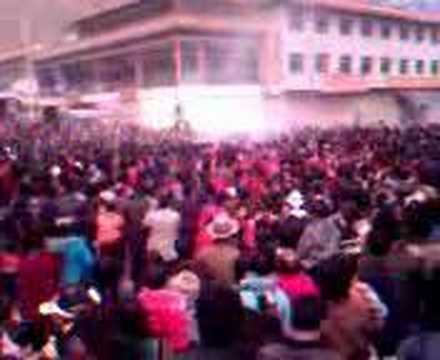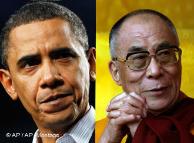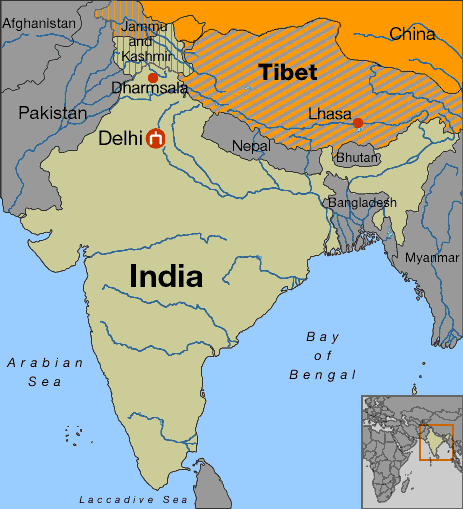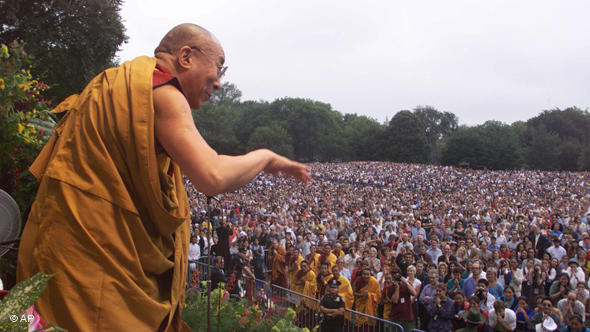
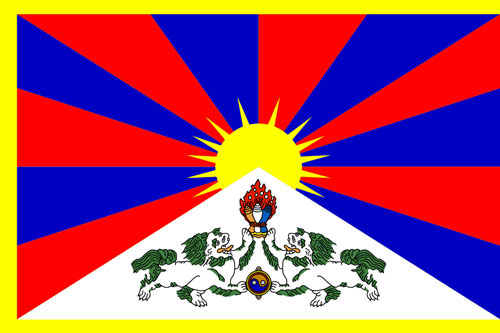
Tibetan History begins with the incursions of Tibetan K’iang in Central China when Buddha was living in India, Confucius and Lao-tseu in China (5th century B.C.). The History of Tibet can be divided in two parts = the first one with the establishment and the end of the Tibetan Kingdoms, the second with the establishment and the end of the Dalai-Lama Theocracy. During both periods civil and religious problems are mixed and cannot be made distinct. In the seventh century, the Tibetan King Sron-tsan-gampo was very powerful and a menace to the Chinese Empire. During this period, many famous buildings and holy places were built. Later when the Tibetan leadership in Central Asia was weaker, the Mongol Khan considered Tibet as a sacred country and secured it. This protection continued when Mongol Dynasty reigned over China. The Chinese Ming Emperors also acknowledged the leadership of Tibetan Buddhism in all of China. Tibet lived peacefully up to the recent period. The first European travellers to visit Tibet were very impressed by the country and its inhabitants. They reported that Tibet was considered as a mythic country. At the end of the second World War, the Mao-Tse-tung Army defeated Chang-Kai-chek and invaded peacefull Tibet. After installation of a pro-Chinese Administration, the first decisions brought a severe famine, suppressed civil rights and imposed the Chinese language. In March 1959, Lhassa population obliged the Dalai-Lama to escape in India, against his will… In the 1970’s, during the Cultural Revolution the Red Guards destroyed nearly 2000 official buildings and holy places, and burnt nearly all the Tibetan libraries and books to get rid of the Tibetan civilization and language.
For the last 4 years a strong repression has occured in Monasteries, in spite of the presence of Europeans journalists and tourists. The actual facts don’t seem sufficiently interesting for the Western media………….
———–
—————
—————–
Tibet officially became part of the People’s Republic of China in the 1950s.Some people say that it has been a part of China from at least 18th century in the Qing Dynasty.
Tibetan culture also influences other regions nearby, such as Nepal, Bhutan, parts of eastern Kashmir and some regions in India, most notably Sikkim, Uttaranchal and Tawang . China claims part of the Indian province of Arunachal Pradesh as South Tibet.
————–
——————-
———-
————-
—————-
——————-
——————-
—————-
Chinese Position !!!
Truth about dialogue with Dalai Lama
2010-02-10 09:06:00 | by: | From: People’s Daily
Tools: Print Size Adjust
China’s State Council Information Office held a news conference on Feb. 2, inviting Zhu Weiqun and Si Ta, executive vice-ministers of the United Front Work Department of the CPC Central Committee, and Nyima Tsering, vice-chairman of the Standing Committee of the People’s Congress of the Tibet Autonomous Region, to introduce the recent talks with private representatives of the Dalai Lama and answer questions.
Zhu said that he hoped the Dalai Lama would change his stance and make the right choices in the remaining years of his life.
Zhu Weiqun, executive vice minister of the United Front Work Department of the Chinese Communist Party Central Committee, gives a briefing on the meeting between the Central Government representatives and private envoys of the Dalai Lama, at a press conference held by the State Council Information Office, Feb. 2, 2010, photo from CTIC.
On the same day, the While House said that U.S. President Barack Obama insisted on meeting with the Dalai Lama during the latter’s visit, despite China’s opposition.
During this period, the Dalai Lama sent his private representatives to meet with the Chinese government while actively seeking the opportunity to meet with the U.S. president as well, asserting his political ambitions on the China-U.S. relationship. On the one side, the Chinese government has shown its consistent patience and sincerity in the 9 talks that central departments had held with the Dalai Lama’s private representatives. They did not close the door even after the Dalai Lama’s side publicly announced the termination of the talks with the Chinese government at a special meeting on Tibet’s future in November 2008, but rather, has been patient to wait for their revision of stance.
On the other side, the Dalai Lama’s side has always been double-faced. For instance, Lodi Gyari, one of Dalai’s representatives, put forth a “Memorandum on Genuine Autonomy for the Tibetan People” during a recent talk, deliberately using obscure words and words from both China’s Constitution and the Law on Regional Autonomy for China’s Minority Nationalities to defend their propositions such as “Greater Tibet” and “high degree of autonomy.”
The essence of that stance is still to seek the semi-independence or independence in a disguised way.
Thirdly, major differences between the Dalai Lama and the Chinese government still exist, which is especially true in terms of the “4 no” principles –The national interests must not be violated, the principles of the Constitution must not be infringed, the national dignity must not be damaged and the universal desires of various ethnic groups of the people must not be defied.
That being the case, why does the Dalai Lama want contact and dialogue with the Chinese government? He actually does not want to improve relations with the Central Government, or make self-reflections on his words and deeds on the basis of respecting history, or face reality and conform to the times to make a fundamental correction on his own political views. But rather, he has taken a delay-and-exhaustion strategy to maintain him “chess piece” position in containing China in international relations. Actually, in the context of Taiwan and Tibet correlating China’s core interest, the U.S.’ tentative political strategy becomes all too clear.
Ironically, it is in this moment that the Dalai Lama has chosen to “meet” with Obama to cooperate with the U.S. strategy.
China-U.S. relations have stepped into the “Dalai Round,” which clearly shows China’s Central Government’s sincerity and integrity on the Dalai Lama Issue. Actually, the fact is quite simple. The Dalai Lama always pretends to be a religious, learned and merciful Buddhist leader who has experienced a lot of hardships but has strong will. Previously, he even publicly claimed again and again that there was no doubt that he was a “son of India.” But in fact, what he did had far exceeded the range of pure “religious issues.”
Our patience and sincerity have become bargaining chips for him to continue his tricks in international communities, and has allowed him to create a false impression: as long as he can maintain contact with the Central Government, he will always be able to possess his “magic ability” for hurting China.
Therefore, the Dalai Lama has become much crazier and more insane. The collusion between the Dalai Lama and the U.S. government during the “Dalai Round” was nothing but another futile effort. For the Dalai Lama, it also exposed once again his plot of splitting the motherland and his true intention of selling the interests of China.
However, although the Dalai Lama has played many tricks, he still forgets one thing that – Whether he wants “Tibet independence” or “independence in disguise,” whether he uses violent methods or “non-violent” methods, whether he wants to internationalize the “Tibet issue” or to beat drums for the international anti-China forces, whether he makes use of the Central Government’s morality or sells out our patience and sincerity, Dalai’s effort is doomed and he will never succeed.
The role the Dalai Lama plays in the international community not only disappoints the Chinese, but also will bore people worldwide. The “political market” gained at the expense of ethnic groups and the nation will become more and more lonely and dangerous. Luckily, the current condition in Tibet gives the lie to the Dalai Lama’s lack of imagination, and China and the world will learn the history and future of Tibet in a more realistic and objective way.
Just like what Zhu had said, we wish the Dalai Lama who is drifting away from his country can find his way back while he is still alive.
—————-
—————–
——————-
Legend tells us that Tibetan history starts with a monkey and a Raksasi, a female ogre, when the monkey was sent by Avalokiteshvara (Chenrezi) for the religious training on this high plateau. The Raksasi persuade the monkey to marry her by threatening to kill thousands of people. Having the permission of Avalokiteshvara, they married and had five offspring who are believed to be the ancestors of the Tibetan people. This legend is well known and depicted in ancient books and murals. Even the name of Tsedang, the capital city of Shannan Region, means ‘the place where the monkey plays’.
However, archeological and geological discoveries lead ethnologists to believe that Tibetans are descendants of aboriginal and nomadic Qiang tribes. According to archeology, Tibetan history can be traced back 4,000 years. At that time, life was simple, with stone implements being used. Historical records show that not until the 7th century could Tibetans be recognized as a race of people. The rising Yarlung Dynasty (Tubo Kingdom) unified Tibet and became an aggressive power. The first palace in Tibet, Yumbu Lakang was built for the first king of Tibet, Nyatri Tsenpo. His offspring, Songtsen Gampo, the most powerful and intelligent king of Tubo, conquered other tribes and founded the first dynasty of Tibet, Yarlung Dynasty (Tubo Kindom). Songtsen Gampo also made great contributions to Tibetan culture, economy, technology, religion, etc. by communicating with the outside world. The outstanding king of the Tubo Kingdom married two princesses of Nepal and of the Tang (618-907). The Princesses brought with them advanced technology, exotic culture, tea, silk and most important of all, peace and Buddhism.
Songtsen Gampo embraced the religion and the first transmission of Buddhism came to the snowy land. The king and the princesses built Jokhang Temple and Ramoche Temple to enshrine the holy statues of Sakyamuni. They also ordered the construction of the grand Potala Palace. The king’s successors followed the religion too and in 779 King Trisong Detsen set up Samye Monastery, the first Buddhist temple in Tibet. The great religious teacher, Padmasambhava was invited to Tibet and Buddhism was recognized as the state religion. The Buddhist influence spread as the expansion of the Tibetan empire continued. The indigenous Bon were not satisfied with the popularity that Buddhism held with the royal family. In 836, King Ralpachen was assassinated and Lang Darma , who believed in Bon and objected to Buddhism, was installed as King. Severe persecution against Buddhists ended the first Buddhism transmission. Lang Darma, in 842, was assassinated by a Buddhist and the collapse of the Yarlong Dynasty followed causing the decentralization of Tibet and a struggle for power for the next 400 years.
In 1042, Atisa was invited to Tibet to launch the second Buddhism transmission and Buddhism gradually revived. Gradually, Tibetan Buddhism divided itself into many sects and sub-sects, which rigorously debated with each other, vying for dominance by seeking patrons among the warring principalities. In the twelfth century, the Mongol Empire rose to power and expanded aggressively. Sakyapa, or the Stripe sect, was quite powerful among all the sects at that time. The Mongol Emperor negotiated with the abbot of Sakyapa and assisted him to become the ruler of Tibet. From then on, Tibet became an appendage of the Mongol Empire. Later, the Mongol Empire conquered the Song Dynasty (960-1279) and founded the Yuan Dynasty (1271-1368). In 1254, Kublai Khan granted supreme authority over Tibet to the leader of Sakyapa. Sakya Pandit was appointed to become the imperial preceptor and a high official in his court. Tibet was thus incorporated as one of the 13 provinces of China. At the end of the Yuan Dynasty, Sakyapa declined and was replaced by the Kagyu order, whose patron offered tribute to the imperial court and was conferred with titles and administrative authority. After the Ming Dynasty (1368-1644) was established, Tibetan high lamas were summoned to the imperial court to receive titles and appointments.
In 1751, Mongol Alton Khan gave his submission to the Ming Dynasty and the Ming Dynasty titled the local leaders accordingly. In 1641, under the patronage of Qosot Gushri Khan, Gandan Podrang Dynasty took the reign and Gelugpa, the order of Dalai Lama and Panchen Lama, stepped into political arena. The Third Dalai Lama paid tribute to the central government and was titled again by the Ming Dynasty. Soon afterwards the Manchurian Qing Dynasty (1644-1911) came to power in China. In 1652, the Fifth Dalai Lama was summoned to Beijing, and in 1653 he was re-conferred with the title Dalai Lama and made religious leader of Tibetan Buddhism by Emperor Shunzhi. In 1654, the Fifth Dalai Lama had the Potala Palace renovated making it the base for Dalai Lamas to live, work and practice Buddhism. In 1682, the Fifth Dalai Lama passed away and dispute arose around the identification of the Sixth Dalai Lama. In 1709, Emperor Kangxi of Qing Dynasty sent his imperial envoy to assist the local magistrate Lhabzang Khan, grandson of Gushri Khan to confirm the Sixth Dalai Lama.
The Panchen Lama was conferred with the title Panchen Erdeni in 1713 by Qing Dynasty. Dzungar Mongols attacked Tibet in 1717, killing Lhabzang Khan, sacking monasteries and deposing the sixth Dalai Lama. The Qing troops dispatched to Tibet escorted the newly installed Seventh Dalai Lama and drove Dzungar out of Tibet. Internal unrest rose again causing the Emperor to send his imperial troops to quench the turmoil and to put in place a plan to reform the local administration. After a series of reforms, the local administrative authority fell to the Dalai Lama and the imperial representative official in Tibet, who were equal in status.
A Lot Drawing Process was introduced to avoid dispute over the identification of high lamas and their installation has been approved by the central government since 1793. In 1904, a British force invaded Lhasa and remained for 50 days. The Thirteenth Dalai Lama fled to Qinghai. In 1911, the Qing Dynasty collapsed and the Republic of China was founded. The Thirteenth Dalai Lama’s title, which was withdrawn by the Qing Dynasty in 1910, was restored by the Republic of China in 1912. Later, the Thirteenth Dalai Lama returned to Lhasa. In 1923, a dispute occurred between the Thirteenth Dalai Lama and the Ninth Panchen Lama. The Panchen Lama fled to Qinghai and died there in 1937. The Chinese government approved the identification of the reincarnations of the Fourteenth Dalai Lama and the Tenth Panchen Lama in 1940 and 1949 respectively.
In 1965, the Tibet Autonomous Region was founded. After opening to tourism from abroad, increasing numbers of visitors from all over the world have visited this splendid pure land.
————————–
Tibet Time Line
1063BC: Bon religion established
127BC: Tibetan kingdom of Nyatri Tsenpo
600AD: Buddhist texts translated into Tibetan
602: Tibet is unified under Namri Songtsen
629: Tibet expands under Songtsen Gampo
630: Songzen Gampo introduces Buddhism to Bhutan
637: Songtsen Gampo builds the first Potala in Lhasa
760: Indian mystics such as Santarakshita and Padmasambhava visit Tibet
763: Tibetan sack of Chinese capital Xian
779: the first Buddhist monastery is founded in Samye by Guru Rinpoche/ Padmasambhava
821: Peace treaty between Tibet and China
842: the Tibetan emperor Langdarma is assassinated and the empire disintegrates
1042: the Indian mystic Atisha visits Tibet (Kadampa teachings)
1073: Sakya monastery and Sakya domination
1080: the Tibetan poet and mystic Milarepa
1247: the Mongols (known as Yuan dynasty in China) become de facto rulers of Tibet but Sakya monks become their tutors
1253: Kublai Khan declares Buddhism the state religion of his empire
1254: Drogon Chogyal Phagpa is appointed ruler of Tibet (first to exert both religious and secular authority over Tibet, or “lama”)
1409: Ganden Monastery founded by Tsongkhapa and Gelugpa domination
1445: Shigatze monastery founded by Gendun Drup (b 1391), later recognized as first dalai lama
1573: The Mongol emperor invites Sonam Gyatso of Tibet to the Mongol capital of Altan Khan and begins conversion of Mongolia to Buddhism, and bestows on Sonam Gyatso the title of “Dalai Lama” (“Ocean of Wisdom”)
1601: The Mongol emperor appoints Yonten Gyatso, a grandson of Altan Khan, as Tibet’s Dalai Lama, causing a civil war in Tibet
1642: Ngawang Lozang Gyatso (fifth dalai lama) assumes both spiritual and temporal authority over Tibet
1648: Potala built in Lhasa
1650: Choskyi Gyaltsen is recognized as first panchen lama (“great scholar”)
1652: Tibet’s dalai lama visits the Manchu emperor Shunzhi in Beijing
1684: Tibet is defeated by Ladaq and Bhutan
1697: The dalai lama Tsangyang Gyatso seizes power in Tibet
1706: A Mongol king Lhazang Khan, an ally of the Chinese emperor, deposes Tsangyang and installs a hand-picked dalai lama, Ngwaang Yeshi Gyatso
1716: Mission by Jesuit priest Ippolito Desideri
1717: Another Mongol king defeats Lhazang Khan and liberates Tibet
1720: The Manchus invade Tibet, turn Tibet into a protectorate and install Kelzang Gyatso as the new dalai lama
1728: The Manchus appoint Pho-lha-nas as the real political leader of Tibet
1750: The Manchus invade Tibet again to quell an uprising and install a council presided by the Dalai Lama
1788: Nepal invades Tibet but the Manchus intervene on Tibet’s side
1792: China enacts rules on how Tibet should elect its government
1793: Nepal is definitely defeated
1841: An Indian kingdom invades Tibet
1856: Peace treaty with Nepal
1904: British troops invade Tibet but soon withdraw
1905: Chinese troops led by Zhao Erfang invade Tibet and destroy many monasteries
1911: After the fall of the Qing dynasty, the Chinese troops in Tibet mutiny and kill Zhao
1913: Tibet proclaims its independence from China, a popular insurrection expels the Chinese troops, and the dalai lama returns to Lhasa
1918: Tibet pushes the Chinese back and reaches the Yiang Tze Kiang
1946: Tibetan representatives attend the Chinese constitutional assembly in Nanjing as observers
1949: China invades eastern Tibet
1951: China annexes the whole of Tibet
1959: Tibetans riot against Chinese occupation (87,000 dead)
1959: the dalai lama escapes from Lhasa to India
1966: During the “cultural revolution” 2,692 Tibetan monasteries are destroyed
1976: China begins a campaign to resettle ethnic Chinese in Tibet
1979: China opens Tibet to foreign tourists
1987: the Chinese government establishes a special school in Beijing to educate the reincarnate Tibetan lamas
1989: The dalai lama is awarded the Nobel Prize for peace
1991: the panchen lama dies, opening a conflict with China over the appointment of the successor
2002: Tenzin Delek Rinpoche and other Tibetan leaders are arrested by the government of mainland China
2006: a railway connection between mainland China and Tibet is inaugurated (the 1,140km Golmud-Lhasa being the world’s highest)
2008: 130 Tibetan protesters are killed and hundreds arrested in Lhasa by the troops of mainland China after Tibetans riot and kill 18 Chinese civilians living in Tibet
